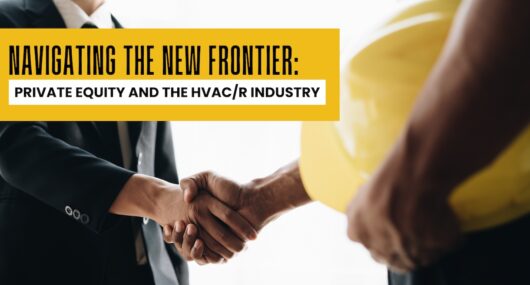
Secrets of the Pros: Navigating the Challenges of Multi-Site Facility Management
Handling several sites can be quite a challenge for facility managers. Every location has its unique issues, which can make it tough to keep things running smoothly. But don’t worry! In this article, we’ll uncover expert tips and strategies to assist you in tackling the complexities of multi-site facility management.
Common challenges faced in multi-site facility management
Multi-site facility management poses unique challenges that can hinder the smooth operation of your organization. One of the most common challenges is maintaining consistency across all sites. Each facility may have different operating procedures, equipment, and even culture, making it difficult to create a cohesive brand experience. Additionally, coordinating communication and ensuring effective collaboration between sites can be a major hurdle. Without proper communication channels in place, information may not flow seamlessly, resulting in delays, errors, and miscommunication.
Another challenge in multi-site facility management is implementing standardized processes and procedures across all locations. It’s crucial to establish a set of guidelines that all site managers follow to ensure consistency in operations, safety protocols, and customer service. However, enforcing these standards can be challenging when dealing with multiple sites, each with its own unique characteristics and local regulations.
Strategies for effective communication and coordination between sites
To overcome the challenges of communication and coordination between sites, facility managers can implement several strategies. First and foremost, establishing a robust communication system is essential. Utilizing technology such as cloud-based collaboration tools, project management software, and communication platforms can help streamline communication between team members across different locations. Regular virtual meetings, video conferences, and email updates can also facilitate effective collaboration and keep everyone on the same page.
Creating a centralized knowledge base or intranet can also be beneficial for sharing information, best practices, and standard operating procedures. This ensures that all site managers have access to the same resources and can easily find the information they need to perform their roles effectively. Encouraging open communication and fostering a culture of collaboration among site managers can further enhance coordination and problem-solving.
Implementing standardized processes and procedures across multiple sites
Standardizing processes and procedures across multiple sites is crucial for maintaining consistency and efficiency. Start by conducting a thorough assessment of each facility’s current practices and identifying areas where standardization is needed. Develop a comprehensive set of standard operating procedures (SOPs) that cover all essential aspects of facility management, including maintenance, safety protocols, customer service, and administrative tasks.
Once the SOPs are established, it’s essential to train all site managers and staff on their implementation. This ensures that everyone is aligned with the standardized processes and understands the expectations. Regular audits and performance reviews can help identify any deviations from the SOPs, allowing for timely corrective actions.
Technology solutions for streamlining multi-site facility management
Using technology can significantly streamline multi-site facility management. There are various software solutions available that can help automate and simplify tasks such as maintenance scheduling, inventory management, and reporting. Implementing a computerized maintenance management system (CMMS) can centralize maintenance operations, allowing facility managers to track work orders, schedule preventive maintenance, and manage equipment and spare parts inventory.
For effective communication and collaboration, cloud-based project management tools and communication platforms can be invaluable. These platforms enable real-time collaboration, file sharing, and task management, ensuring that everyone stays connected and informed regardless of their location. IoT (Internet of Things) devices can also be integrated to monitor and control equipment performance, energy consumption, and security systems across all sites.
Developing a comprehensive maintenance and repair plan for multiple sites
Maintaining the health and functionality of facilities across multiple sites requires a comprehensive maintenance and repair plan. Start by conducting regular inspections to identify any potential issues or areas for improvement. Create a preventive maintenance schedule that covers all essential equipment and systems, ensuring that regular inspections, cleaning, and servicing are carried out.
Develop a sophisticated asset management system to track the condition and maintenance history of each facility’s equipment. This allows for proactive planning and budgeting for repairs and replacement. Implementing a reactive maintenance process for addressing urgent repairs and breakdowns is also important. Establishing relationships with reliable contractors and service providers who can respond quickly to maintenance requests is essential for minimizing downtime and ensuring prompt resolution of issues.
Ensuring compliance with regulations and industry standards across all sites
Compliance with regulations and industry standards is non-negotiable when managing multiple sites. Each site may have its own set of regulations to comply with, making it crucial to stay up to date with local, state, and federal requirements. Conduct regular audits to ensure that all sites are meeting the necessary standards and address any compliance gaps promptly.
Develop a compliance checklist that covers all relevant regulations, codes, and standards specific to your industry and locations. Ensure that all site managers and staff are trained on these requirements and understand the importance of compliance. Additionally, establish a system for tracking and documenting compliance activities, including inspections, training, and certifications.
Training and empowering site managers for efficient facility management
Site managers play a critical role in the success of multi-site facility management. Providing them with the necessary training, resources, and support is essential for efficient operations. Start by identifying the key skills and competencies required for effective facility management and develop a comprehensive training program that covers these areas.
Empower site managers by giving them autonomy and decision-making authority within their scope of responsibility. Encourage them to take ownership of their facilities and provide opportunities for professional growth and development. Regularly communicate with site managers to understand their challenges, provide guidance, and recognize their achievements.
Conclusion: Key takeaways for navigating the challenges of multi-site facility management
Managing multiple sites comes with its unique set of challenges, but with the right strategies and tools, facility managers can overcome these hurdles and excel in their roles. By implementing effective communication and coordination strategies, standardizing processes and procedures, leveraging technology solutions, developing comprehensive maintenance plans, ensuring compliance, and empowering site managers, multi-site facility management can become a streamlined and efficient operation.
Remember, consistency, collaboration, and continuous improvement are key to success in multi-site facility management. By adopting the secrets of the pros, you can navigate the challenges and unlock the full potential of your organization’s facilities, providing a seamless experience for customers, employees, and stakeholders alike.



